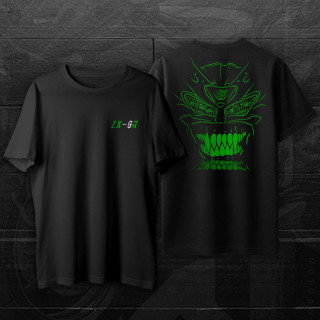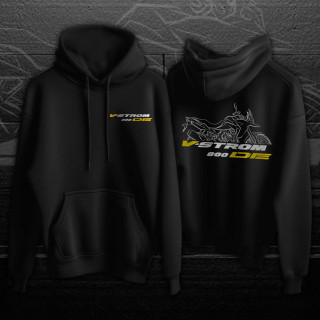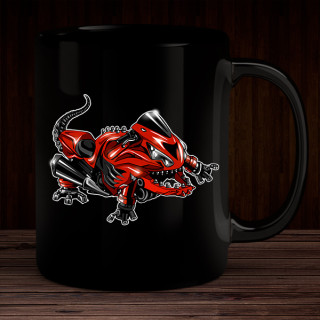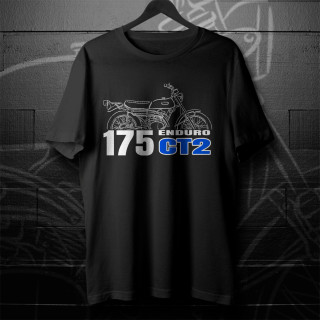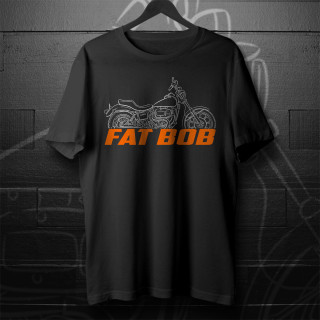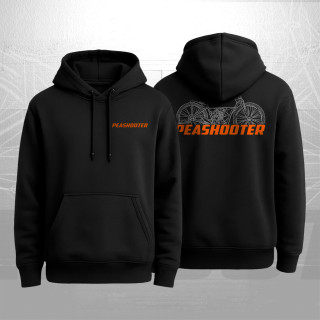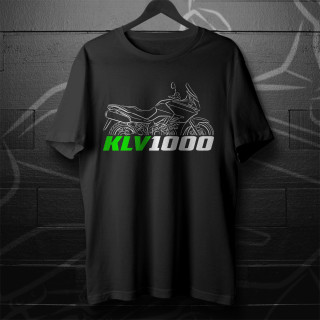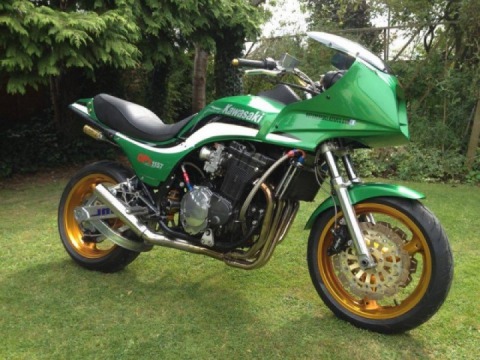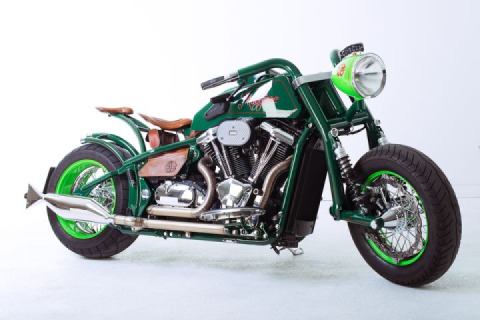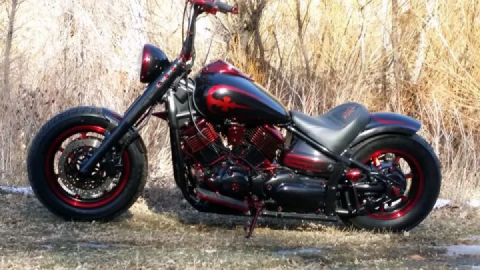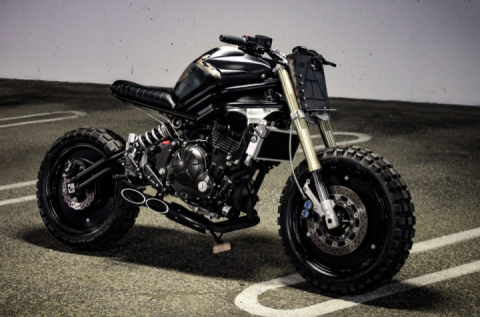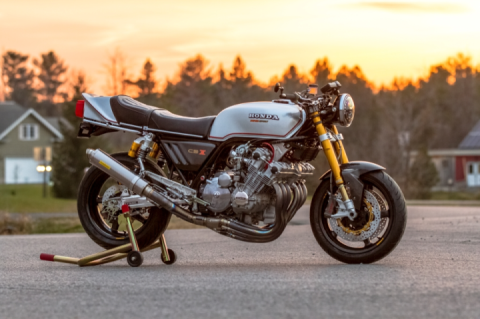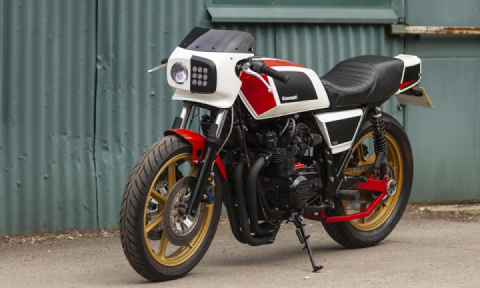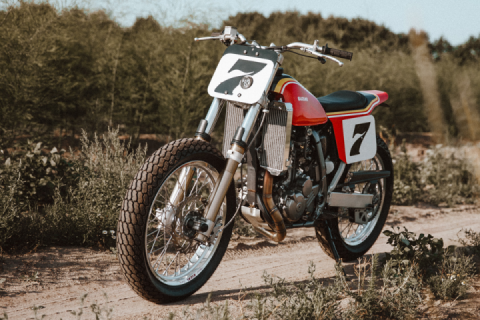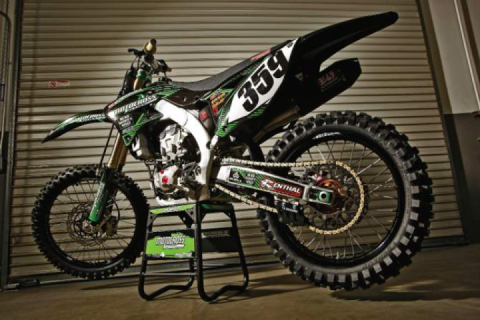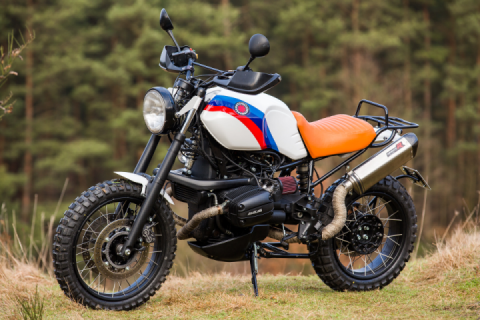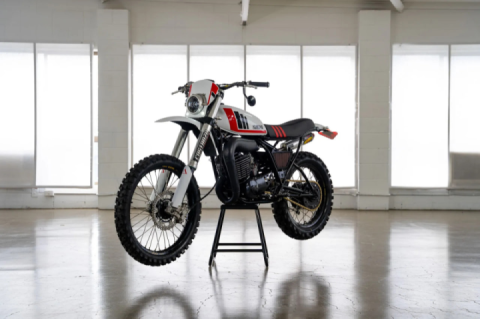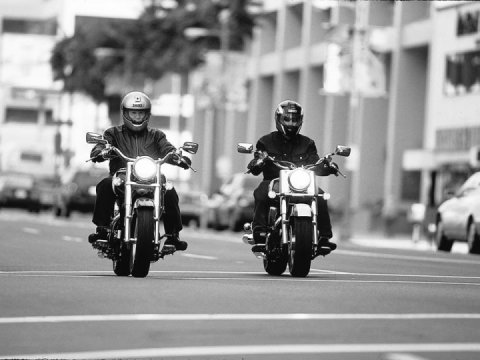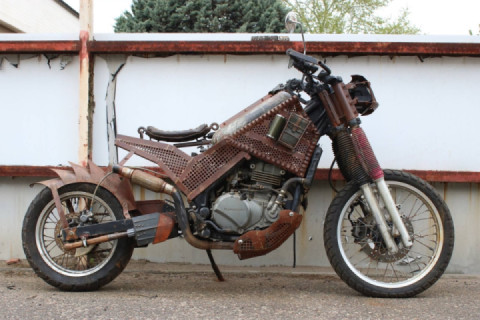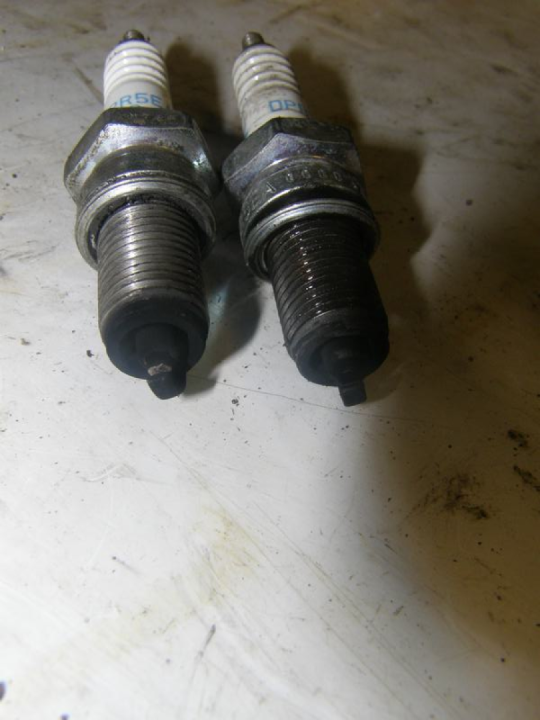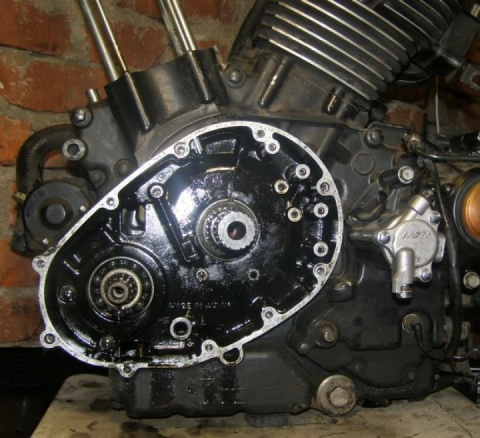If you were the proverbial kid in the candy store, you’d walk around in a sugary daze, chocolate drooling off your mug, nougat glazing your molars. But what if you owned said store, and you had one hell of a sweet tooth? You’d make sure you had something so righteous, so decadent, so glorious, the other kids couldn’t hope to get it, right?
Enter John Hoover, basically the shop keeper of what we like to think of as Kawasaki’s candy store. Hoover, who’s Director of Product Management, Motorcycle Division, for Kawasaki, is a huge bike enthusiast—a big kid with a sweet tooth and a garage full of custom bikes reflecting that complete enthusiasm. There’s an orange one in the corner, though, that stands out in particular. It would make your mouth start watering immediately…it’s so much sweeter than the others.
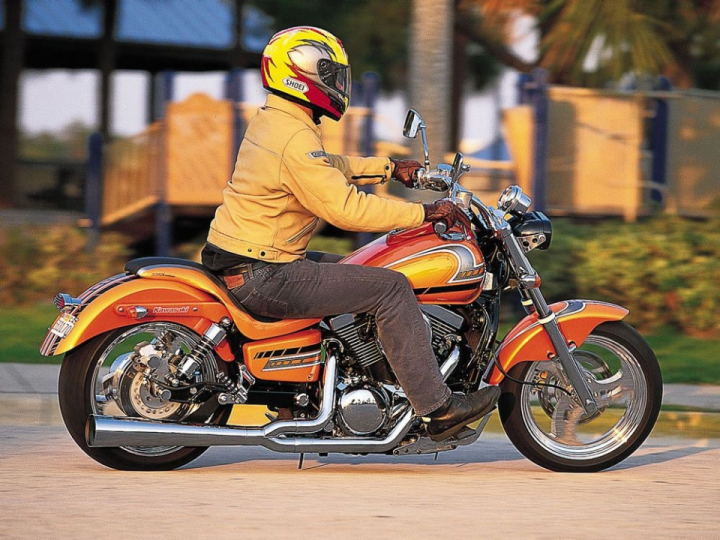
The Vulcan 1500 Classic hasn’t emerged as Kawasaki’s best-selling bike of the decade for nothing, and it’s no surprise to anyone that the head honcho has several himself. But the origins of this orange eye-candy bar certainly are a bit off the wall. Though it started life as a stock Kawasaki Vulcan 1500 Classic, the bike later dubbed “Orange Krush” has evolved considerably since we first tinkered with it way back in the August 1999 issue of Motorcycle Cruiser, for a hop-up article. For those who might not understand the implications of the last statement, let’s just say that when it was at the magazine, the bike was blessed—blessed by the performance-addled hand of Cruiser’s Evans Brasfield.
When Cruiser got the big cruiser way back then, it was a nameless, bone-stock, 1999 VN1500 Classic, generating a mere baseline horsepower of 45.8 at 4000 rpm, with a grunty 65.1 foot-pounds of torque kicking in at 3000 rpm. But the balance of power began to shift with our installation of Thunder Mfg.’s Thunder Air Kit, which yielded a freer-breathing system and an increase of more than 10 percent in horsepower and torque. We were even more stoked that we didn’t sacrifice any driveability with the added power. A Dyna 2000 high-performance ignition module then entered the fray, to unanimous, thundering applause. With a straightforward installation and 10 ignition curves to choose from, the Dyna improved the Vulcan’s power and torque curves even more noticeably, and threw in a couple of more horsepower to boot. Its flexibility and variety of options were a pleasant surprise to everyone.
But hang on—the power swell hadn’t peaked just yet. The engine was augmented further with a Thunder Mfg. High Performance Piston kit. The Vulcan’s buffed-out powerplant now boasted 1.0mm-overbore pistons, hotter cams, a higher compression ratio, and springier valves. Rejetted carbs coupled with a Thunder Air Kit shot the numbers through the roof. Horsepower jumped up 46 percent from stock, and torque increased to a stump-pulling 83.6 foot-pounds. On the dragstrip our test-bike screamed through a 13.04-second quarter-mile. But, wouldn’t you know it—just as we got the thing perfectly tweaked for our delinquent purposes, we had to give it back. That’s when Hoover got his hands on it.
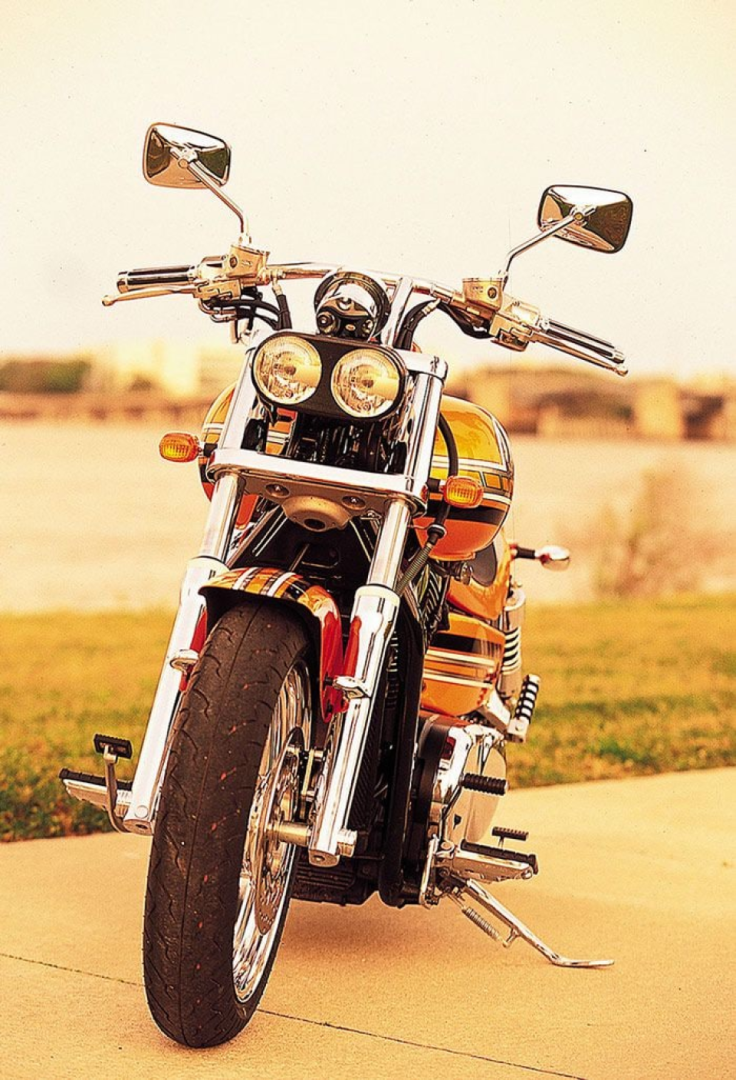
Usually, when a modified bike goes back to a manufacturer, it goes right to the crusher. Usually, we say, except when John Hoover’s minding the store. Hoover instantly saw the tremendous custom potential of a hot-rodded bike, especially a Vulcan Classic, and after riding it, he decided to make it look as exciting as it ran. Reconfiguring the externals and brushing up its hide would transform this test mule into a thoroughbred to be reckoned with. So he sat down with Alex Paul at AP Designs—master Kawasaki color man and creator of countless Kawasaki prototypes—and hurled ideas around the drawing board. Hoover wanted to do the bulk of the work by himself in his own garage. Paul wanted badly to do an orange-themed bike. And so the Orange Krush began to take shape.
First things came first—the test Vulcan’s cacophonous Vance & Hines slash-cut dualies were traded in for V&H’s more mellifluous, hot new Pro-Pipe. The highly coveted, nigh-impossible to obtain (hell, we couldn’t get one!) 2-into-1 pipe not only jacked up the Vulcan’s horsepower, but also gave the engine some midrange boost, a tweak that becomes most apparent when you’re just breaking into full gallop down the road. This revolutionary pipe is the first true performance 2-into-1 system made expressly for import cruisers, with their higher compression and hotter engines. After hearing and experiencing the pipe, we wondered how any true hot rod could do without it.
Naturally, the bike had to be lowered to create a snarling, aggressive demeanor. Progressive Suspension provided squatty 11-inch 412-series shocks that not only dropped the rear menacingly, but actually gave the big cruiser an even more stable ride, thanks to favorable damping and rebound rates. The front of the bike came down an inch as well, with Progressive’s Front Fork lowering kit, and according to Hoover, it’s one of the most comfortable bikes he’s ever ridden.
Lurking beneath the lowered shocks are swank new 17-inch Dagger billet wheels crafted by RC Components, both front and back, and both polished to a devastating sheen. Dunlop 207 rubber covers both wheels, with the rear tire puffing out to a hefty 5.5 inches of width for an almost drag-bike vibe. Which makes sense when you realize that this bike has done strip time in Gainesville. The tether hanging from the kill switch is a dead giveaway. And it’s a testament to the Vulcan’s customizing potential that stock brakes and calipers bolt right back on to these wheels!
The Krush’s forward controls basically come from a stock Classic; Hoover simply mounted the mounting plates flush to the frame, welded on footpegs from a 750 Vulcan, and sent the whole thing out to be chrome plated. The brake lever and pedal is from the Vulcan 1500A model, and both mounted up pretty as you please, with no fabrication needed.
The drag bars are for a Vulcan 800, and came out of Kawasaki’s Fire and Steel catalog, with risers and wiring included. Chrome grips came from the Fire and Steel catalog as well, but Hoover elected to use Euro mirrors from a smaller, old model Kawasaki he’d found lying around, and the turn signals were scavenged from an old Astrala model (if you can remember back that far) which mounted up remarkably easily.
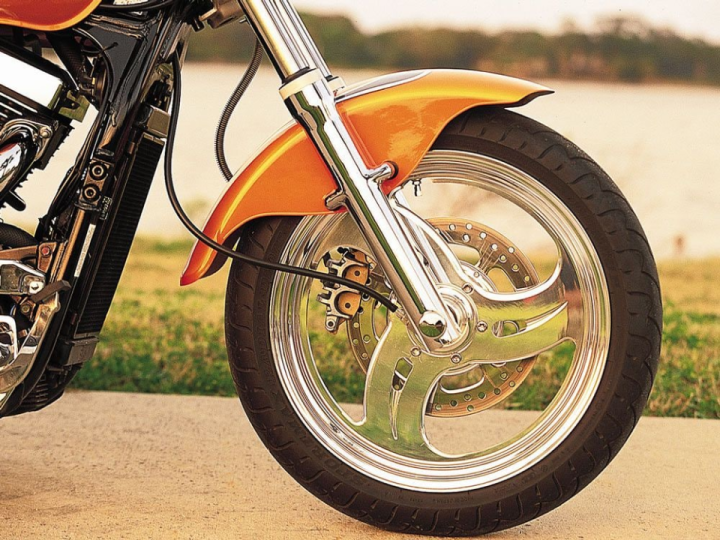
The robotic, menacing dual-beam Euro headlight came out of the voluminous Planet Cruiser catalog. A Bikers Dream taillight was mounted so that it could swivel a full 180 degrees, for flexibility in rear lighting. You can lift it up to have the light sweeping across your license plate, or rotate it down for a more sedate look on the fender.
The aesthetic and functional Streamer fiberglass fenders were selected carefully from the pages of Planet Cruiser’s catalog. The fenders come unfinished so they can be readily matched to the paint scheme of the bike, and because they’re fiberglass, they’re easily drilled fit. Fiberglass is also more readily shaped and cut, which Hoover did to achieve the fenders’ minimal profile.
The whole shebang was handed over to Alex Paul at AP Designs in San Diego. As mentioned earlier, Paul has been Kawasaki’s inside color guy for years, and has worked on various custom projects from watercraft to motorcycles to ATVs. Hoover already had some solid ideas, and Paul…well, like we said, Paul had never done an orange bike before…and he really wanted to. And so Paul laid down an unusual bright orange pearl coating of color, featuring multi-colored graphics filling in broader swathes of bodywork. Can you say conspicuous? You could spot this bike from another planet. But Paul still had big plans for….
The seat! What to do about the seat? It could’ve become a standard black leather number we suppose, but then this was the Orange Krush, and not just any seat would do. Hoover petitioned the boys over at Travelcade/Saddlemen for some answers, and they responded with their custom Profiler seat, which integrated an exclusive gel material. The result is a ride befitting of royalty. Or a top executive, anyway. Hoover then threw the saddle back to Alex Paul for the hard part—the color match. In a fit of inspiration, Paul took a design cue from his watercraft styling manual and recovered the seat in a special high gloss clear vinyl, which is paintable. He dyed the inside and sides—“colorblasted,” to use his term—to match the color of the bike’s bodywork, and voilá—the Orange Krush was crowned with comfort and style.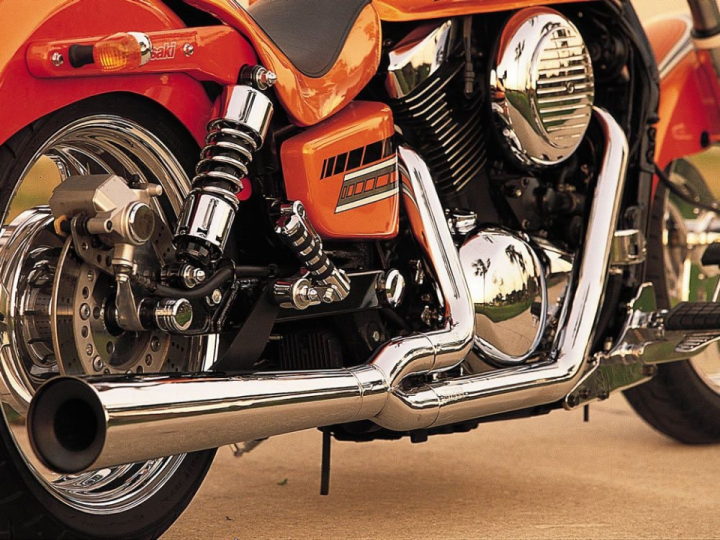
Several of our staffers have had a chance to ride the completed Orange Krush in the last year, and, in the words of one of those chosen few. “it goes like stink.” At this point, we’re all a little envious of John Hoover. A little miffed, too. After all, he snatched the hot rod out of our playpen. We can’t visualize exactly what kind of bike we’d own if we had unlimited resources, but we like to think it’d be fast, it’d be good-looking, and it’d be comfortable. Kind of like the Orange Krush.
This article was originally published in the October 2000 issue of Motorcycle Cruiser.
#Kawasaki #Vulcarn #Moto #Custom #Bike




